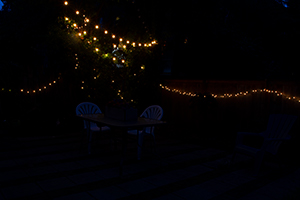Aperture
Aperture can be defined as the opening in a lens through which light passes to enter the camera. It can add dimension to your photos by controlling depth of field.
Depth-of-field is the zone of sharp focus in a scene, and this can be controlled by the aperture settings.
A small number like f1.8 to f5.6 is referred to as shallow depth-of-field, great for uncluttering the background and making your subject stand out.
A larger number like from f8 to f22 is referred to as a large depth-of-field, normally ideal for landscapes as it keeps both the foreground and background in focus.
Use this slide bar to see how a wide-open aperture (small number) compares to a narrow aperture opening (large number).


